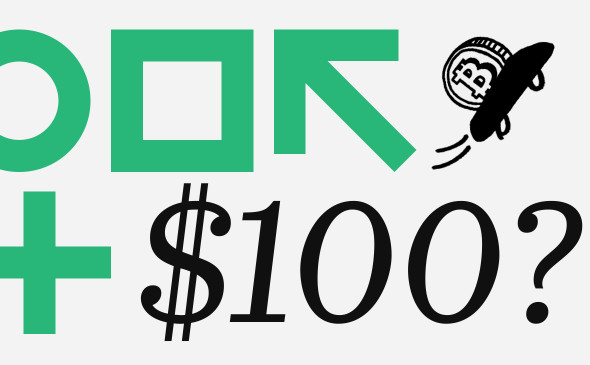Netflix shares have risen 6,000% in 10 years. What will happen to the papers next
The company pioneered the streaming sector. This made her one of the leaders of the industry. But after the pandemic, Netflix shares will slow growth, experts say
Share price of January 4, 2010
: $7.64 per share Cost now:
$476.89 per share Dynamics: 6142%
Reason for growth: Netflix management correctly assessed the prospects of streaming, which caused great demand among the population. And the pandemic has further fueled interest in streaming services. Prospects: The company has an opportunity to significantly expand its international business.
High competition in the sector, high debt load and overvaluation of shares in multipliers can hinder further growth.
The pioneer of streaming broadcasting Netflix appeared in 1997. At first, the company was engaged in the sale and rental of films on DVDs. But in 2007, she began to actively develop the video streaming service, broadcasting movies, tv series and other multimedia content over the Internet. Netflix charges for subscriptions to its services, essentially selling access to the multimedia library.
Until 2013, the company bought the rights to show films, TV series and TV programs from media companies. But seven years ago, Netflix executives arranged for Netflix to shoot its own content. Netflix now releases more than 100 TV series and movies a year. The most famous of them are "House of Cards," "Orange is the hit of the season," "13 Reasons Why," "Black Mirror," "The Witcher."
Netflix is among the top five tech giants - Facebook, Amazon, Apple,Netflix and Google(Alphabet). These companies are often referred to together as FAANG - by the first letters of their names.
Netflix has grown in market value by 416% in five years. During that time, the Nasdaq index added only 103%. And on the ten-year period the growth of the streaming service was as much as 6142%. That is, if in early 2010 the investor invested $1000 in the company, by today he would have earned more than $60,000.
Why Netflix shares have risen
Foresight of leadership. Netflix was the first to appreciate and implement the possibilities that streaming gives. Thanks to the vision of management, the company became first a pioneer, and then a leader in this market.
By the early 2010s, Netflix's popularity had skyrocketed. The number of subscribers grew at double-digit rates, and by the end of the first quarter of 2020, the company was already serving 182 million people. They brought Netflix revenue of $5.8 billion.
The COVID-19 pandemic. Netflix was one of the few companies to benefit from the pandemic. Transfer of employees to work from home and self-isolation severely limited people in entertainment. The most attractive and accessible form of leisure was watching movies through streaming service.
As a result, 15.77 million people subscribed to the service worldwide in the first three months of 2020. This is only 12 million less than for the whole of 2019. Thanks to the new audience, Netflix managed to achieve a positive free cash flow (FCF) - $161.61 million. It is noteworthy that the last time the company recorded a positive value Fcf in the second quarter of 2014.
"The positive FCF was largely achieved due to the fact that the company moved part of the planned content production to later dates. Temporary reduction in costs has led to an increase in cash and equivalent equivalents on the company's balance sheet," Mikhail Smirnov, international market analyst at General Invest, explained this result.
However, the expert noted that Netflix management still expects that by the end of 2020 free cash flow will return to negative territory. That is, the costs will exceed the income. Savings in the first quarter could be temporary as unfilmed films will be completed later, he added.
What will help Netflix
International business. Netflix has a lot of growth potential in international markets, experts say. In their opinion, the American market is already oversaturated, so the opportunities to attract new users there are limited.
This is indicated by the reporting data for the last quarter. In the first three months of 2020, Netflix's paid subscribers in the U.S. and Canada totaled 70 million. And, for example, in the Asia-Pacific region - only 19.8 million. At the same time, compared to the previous quarter, the increase was 3.4% and 22.2% respectively.
Work on image and attracting customers. On May 21, 2020, Netflix announcedthat it was going to stop auto-selling subscriptions for accounts that had not been used for more than 12 months.
"For a company that still fails to generate cash flow, voluntary refunds seem like an odd choice." Dead" accounts are like free money for companies; without the cost of customer service, they can be very profitable for business," commented Timur Bayanov, senior personal market broker at BCS Broker. However, he added that the amount involved was inconsequential for Netflix's business.
According to Valery Emelyanov, an analyst at the investment company Freedom Finance, this generous gesture can have big image consequences. "First of all, Netflix has already made history as the first major content provider to be so loyal to its customers. And secondly, it is a strong signal for investors that the loss of a "dead" audience is insignificant for business," he said.
"In our opinion, Netflix took advantage of the situation quite successfully to stand out from the competition. With a narrower customer base, Hulu, Disney and HBO are unlikely to be able to introduce a subscription car. And all other things being equal, users will have more motivation to choose Netflix. This will support the company's sales and stock quotes for the long term," Emelyanov concluded.
What will play against the company
High competition. The popularity of streaming has attracted such large companies as Apple, Walt Disney, Amazon and others to this market. Now Netflix still tops the ratings of streaming services. But he already has to defend his place in the market, from where he is replaced by strong competitors.
In November 2019, the Disney service came on the market, which immediately attracted a huge audience. In the four months since its opening, Disney has gained 50 million paid subscribers worldwide, although the company expected to reach 60 million by 2024 alone.
Among the newly opened video services are also:
Apple TV, launched in November 2019;
Peacock from Comcast,running from April 2020;
HBO Max by AT'amp;T,released in May 2020.
In addition, previously on the market already worked services Hulu from Walt Disney, Amazon Prime and HBO Now from AT'amp;T. The opening of new streaming services led to a side result: owners of films and TV series refused to sell licenses for showing to third-party companies, as planned to broadcast them on their own platforms. That's how Netflix lost the rights to show the popular TV series "The Office" and "Friends."
Under these conditions, Netflix has to increase the cost of shooting and buying the rights to movies and TV shows. And this leads to an increase in the debt load.
Debt load. Now Netflix is operating in a very unfavorable environment. To create movies and TV series requires more and more money, and she has to borrow funds. At the end of the first quarter of 2020, Netflix's net debt was $9.52 billion. A year earlier, it was much lower - $6.96 billion, and a year earlier - in March 2018 - $3.95 billion.
However, investors are not very worried about Netflix's debt load at the moment, as the ratio of net debt to Ebitda 0.82 at the end of 2019 and 0.71 at the end of 2018.
The net debt/EBITDA ratio shows the company's ability to pay back debts. The indicator indicates how many years it will be able to repay the debt with the constant financial results. Normally, values less than 2 are not a cause for concern.
No dividends. Netflix pays no dividends at all. All free and raised funds the company invests in the production of its own original films and TV series, seeking to defend the share of the streaming market and attract new subscribers.
Because of this, Netflix is losing the attention of investors who adhere to the dividend strategy. This does not help the growth of the company's shares.
Overvaluation. The market values Netflix shares quite expensively, as multipliers say. The market value-to-earnings ratio of P/E is 102.4, which is very high even for the technology company. EV/EBIDTA at 16.9 is in the sector average.
What will happen to Shares
Netflix, like most competitors, is now trading above the historical average. The main reason for this rise in shares was the pandemic of coronavirus. "Netflix's promotions along with zoom Video became the champions of quarantine, as they were able to provide viewers with quality content for the period of self-isolation," Artem Deev, head of the analytical department of AMarkets, told RBC zuote.
The expert warned that as the restrictions are lifted, the number of viewers will decrease - it will affect the increase in business activity and reduce the time to watch TV series. But Netflix still has a strong growth potential and a loyal audience, he said.
"Right now, the company's securities are trading above $476 per share, which is 56% higher than the March low. This is a fairly high price, so after the quarantine is lifted, investors may no longer be able to get such high capital gains," Deev said.
Mikhail Smirnov believes that at the moment Netflix looks like a controversial investment because of the growing competition in the sector and the likelihood of further increase in the debt load.






Comments
Post a Comment